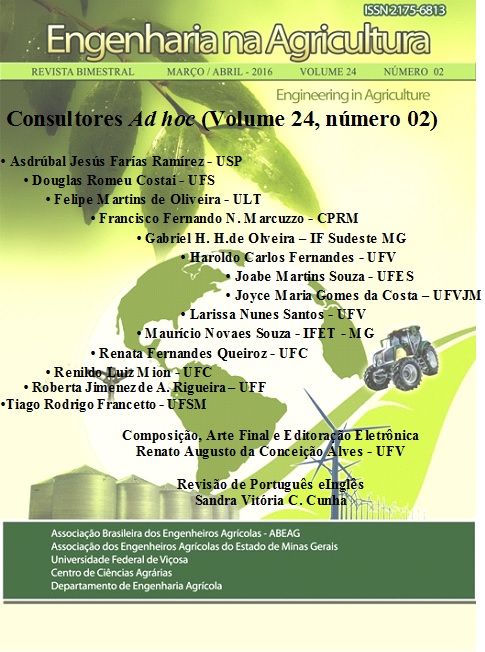USE OF EDIBLE COATING TO EXTEND THE SHELF LIFE OF GUAVA ‘PEDRO SATO‘
DOI:
https://doi.org/10.13083/reveng.v24i2.651Keywords:
atmosfera modificada, filme comestível, pós-colheita de goiaba, Psidium guajavaAbstract
Guava has intense metabolic activity, requiring the use of post-harvest technologies for extension of its life and quality maintenance. As the fruit is consummed with the skin, the application of edible coating is a modified atmosphere technology that can be implemented. This study aimed to evaluate the postharvest quality indeces (such as vitamin C, lycopene, ?-carotene, glucose, fructose, sucrose, etc.) of guavas ‘Pedro Sato’ submitted to three different edible coatings (based on cassava starch, sodium alginate or carboxymethylcellulose) and under 10 oC refrigerated storage. Regardless of the treatment applied, guavas ‘Pedro Sato’ achieved higher levels of vitamin C after prolonged storage of 22 days. On the other hand, the use of edible coatings based on starch and alginate were effective in delaying ripening in guava ‘Pedro Sato’ stored for four days under refrigeration, followed by three days at room temperature. Guava coated with cassava starch showed higher lycopene levels (antioxidant activity) and ?-carotene (precursor of vitamin A in human body), at longer storage periods. Therefore, this edible coating should be recommended for the storage of this fruit, for retention of important quality attributes.Downloads
Downloads
Published
How to Cite
Issue
Section
License
Authors who publish with this journal agree to the following terms:
The author(s) authorize(s) the publication of the text in the journal;
The author(s) ensure(s) that the contribution is original and unpublished and that it is not in the process of evaluation by another journal;
The journal is not responsible for the views, ideas and concepts presented in articles, and these are the sole responsibility of the author(s);
The publishers reserve the right to make textual adjustments and adapt texts to meet with publication standards.
From submission, the author is fully conceding the paper's patrimonial rights to the publication, but retaining the owner of its moral rights (authorship and paper's identification) according to Creative Commons Attribution-Noncommercial.








 Licensed by
Licensed by 